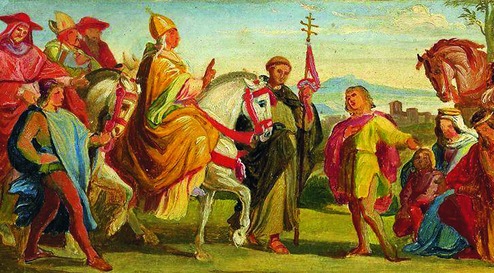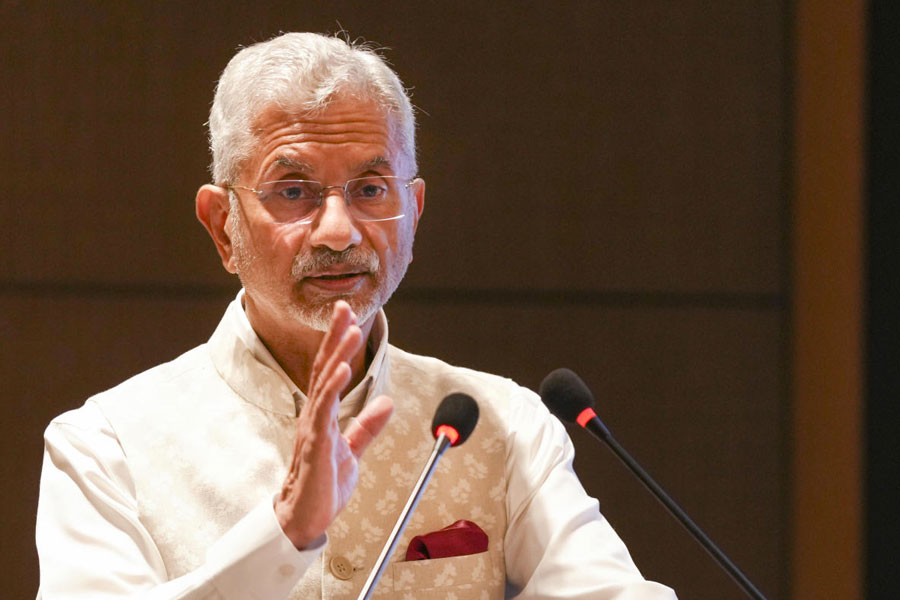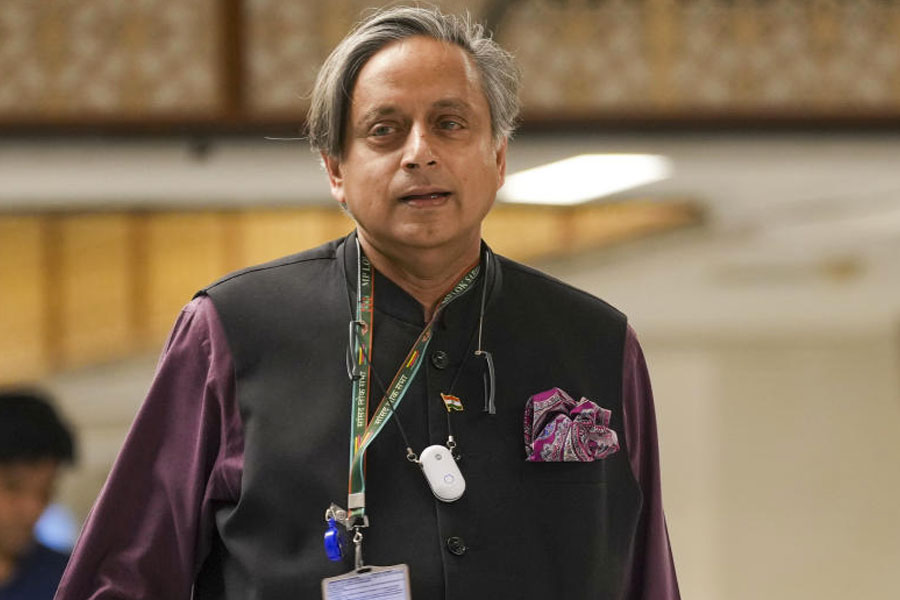 |
When I was young and discovering J.M.W. Turner through small and often not very accurate reproductions, I used to think of him as a very Indian painter. For one, there were the colours, quite lurid when compared to those of other English artists. Then there was the swirl of the paint, big and amorphous, not very traditional Indian at all but somehow desi-ly emotional and expressive when compared to other, more contained, European contemporaries. And finally, the tiny figures, unimportant in scale and to the subject, or so I thought; half sketched in, almost mere outlines many of them, as they would have been before a Mughal or Pahari painter filled them in — so kind of potentially Indian-miniature. As my understanding of art deepened somewhat, I began to realize that Turner was actually at the heart of the European post-Renaissance visual project, the master-distiller of perspective, non-tropical light and the dynamic distribution of positive and negative space. I realized his work was the hinge between Renaissance painting, the Dutch and everyone else who’d followed, and the Impressionists and the soon-to-come 20th-century modernists. It was when I finally saw my first Turners in the flesh — especially the scale of the brush marks on the big oils — that it got driven home to me what a deeply Occidental artist the man had been.
And yet, and yet, and yet. And yet, such is the depth and wickedness of a true master that she or he forces you to reassess your views and flip them around every now and again. Forget the Turko-Persian-Indians. Surely, the vast expanses of sky and sea in Turner owe something to Chinese and Japanese painting and prints? Surely the bunching of brushmarks and the tiny melees of intense colour against the spread of almost non-colour are subconsciously smuggled in from outside the European art that so loved to crowd every inch of its narrative canvases? No matter, the guy was clearly a nutter, a madman, truly off-kilter in a way that was equal to the craziest artists our subcontinent had produced.
Watching Mike Leigh’s bio-pic, Mr. Turner, muddies the colours further. In an odd way, Leigh circumvents the painting for biographical detail. Like a Turner canvas, vivid bits of information and drama are concentrated against a large expanse of subtle monochrome, i.e not very much happening. Timothy Spall’s Turner, working class-turned-bourgeois, already almost past middle-age, snorts and barges his way through the film, confidently doing what he pleases, the license for this given to him by his genius, well recognized and acknowledged in his lifetime. It’s a remarkable portrayal of a certain kind of 19th-century figure, brash, braying, successful, yet not devoid of tenderness or sensitivity (in comparison, for instance, you cannot imagine an obscure daubist like van Gogh behaving like this, not without paying a huge social price). The film has its gaps and dissatisfactions: Turner clearly had a sense of politics and justice that is more or less absent from the screenplay; despite the bravura scenes of the man attacking his canvases with everything, including his spittle, there is no great insight into why he painted the way he did and why it was so different from his contemporaries; nor is there any deep examination of how that painting developed in his later years.
What there is, however, is a gorgeously shot collage-portrait of a gargantuan Dickensian figure with his cast of supporting characters. There is no ‘story’ as such in this quite gripping two-and-a-half-hour feature film so any description of these would count as a plot-spoiler. Nevertheless, one can’t avoid mentioning that the scene of Turner’s first wife landing up with his daughters to demand child support is simultaneously devastatingly sad and side-splittingly funny, as are the scenes of waspish rivalry between the top-hatted, waistcoated painters as they re-touch their paintings at the annual show at the Royal Academy, the petty nastiness equal to anything the artistic sons of Calcutta have ever produced, in any branch of the arts.
Watching the film in an old but beautifully restored north London cinema which started in 1914 is in itself a strange experience. Time telescopes from the grunge and grit of early Victorian England through the clank and shudder of the first bioscope years to this strange, digitized, anti-tactile time. As these middle-class Londoners file out of the cinema, I find myself trying to find their Victorian ancestors in their faces, the mutton-chopped oligarchs, the flare-nostrilled fishwives, the unctuous pigment-merchants.
After the opening bravura track shot from a windmill in Holland, the Mr. Turner doesn’t go out of the British Isles, it doesn’t follow Turner on his many visits to Germany, Switzerland and Italy but the Late Turner show at the Tate Britain is obviously happily obliged to take you to all these corners of 19th-century Europe. Here, across several galleries, is a definitive show of the painter’s last two decades, the scale stretching from small travel sketchbooks to the famous, large oil paintings. If the small reproductions seen in the 60s and 70s tricked me into connecting Turner to north Indian miniature painting, looking at this mass of work I have to keep reminding myself that Turner came before the Impressionists, well before Claude Monet’s water-lilies, more than a century before Rothko, De Kooning and Twombly. Somehow, through some miracle of time travel, Turner seems to have gone into the future, kidnapped and brought back a completely different way of seeing.
Here he is, chasing the light, trying to keep still in a stormy sea, laying down the impasto of what seems like his own viscera, scorching you with a peeled-ozone sun. Here he is also traversing scale as few other artists have done from the huge gestures that construct the vaulting skies in the oils to the tiny 00 brush squiggles that create two dwarfed figures in a street of a mountain city under the shadow of high mountains, all contained in a small water-colour. Again, there is another traverse, from mythical Greece to ancient Rome to the onrushing steam-engine and rolling steamship; it seems odd that there are no early aircraft but they only came half a century after Turner died.
It’s a weekend and the show is well-attended. The crowd sifts in and out of itself around the paintings, like human flour, moving quietly before the unquiet work. I try and connect this Turner, in this London autumn, to the Turner half-imagined from books, decades ago in the heat of Calcutta and I fail. But standing in front of Snow Storm and Steam Boat off a Harbour’s Mouth, I make another link and it has to do with passion and joy. A friend who is very knowledgeable about Hindustani classical music had once given me an analogy about Bhimsen Joshi — he is like an elephant bathing in the river of melody, cascading notes over himself with his trunk. Suddenly I remembered this description and it seemed to fit J.M.W. Turner perfectly. The big paintings were like the grand ragas, sometimes versions of the same raga, the same set of notes explored differently; the small water-colours were like thumris and bhajans.
In the film, Timothy Spall’s Turner looks like he has never ever bathed in his life, that the very mention of bathwater touching his skin would evoke one of the eloquent snort-snarls that Spall has developed for the character. However, when immersing oneself in his late painting, it’s not so far-fetched to think of Turner as an elephant, a not very Indian pachyderm but masterfully bathing in paint and light in a very desi unbuttoned way.










